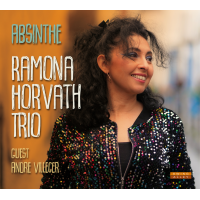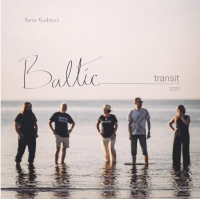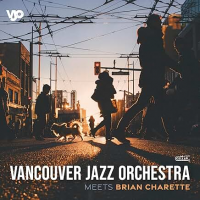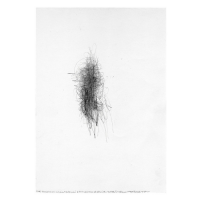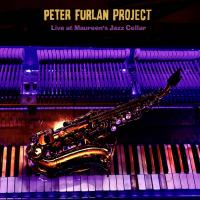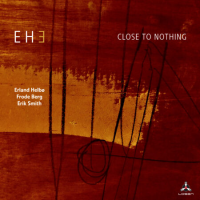Home » Jazz Articles » Album Review » Steve Davis: Steve Davis Meets Hank Jones, Vol. 1
Steve Davis: Steve Davis Meets Hank Jones, Vol. 1
The legendary pianist Hank Jones is the older brother of trumpeter Thad Jones and drummer Elvin Jones. The elder Jones has played with pretty much everybody over his storied career, and is himself a key signpost in the evolution of the jazz vocabulary
The idea for this recording came after trombonist Davis took part in a Fall 2007 quartet session with Jones. Davis recalls, "As I was thanking him, he said, 'Why, Stevie, we had so much fun, I think perhaps we ought to do it again.' I said, 'Twist my arm.' My idea was that it would be like Jones and Peter Washington playing duo at Bradley's (the iconic Greenwich Village piano saloon where Jones played regularly until the early '90s), with me sitting in, trying not to mess it up." The session took place in June 2008, a month before Jones, who had endured quadruple bypass heart surgery at the end of 2006, turned 90, and died less than two years later.
The album opens with the lone original composition here, Jones' "Interface" (see YouTube video below), which has appeared on several of his previous outings. It is a lovely, bluesy mid-tempo bop piece. Right away one notices the nuanced sound of this drummer-less trio. Washington provides the pulse, as Davis' trombone skills and burnished tone (at times almost sounding like a flugelhorn) and Jones' experience of making interesting chord choices come together and involve listeners in this unique sound. The solos are always inventive and thoughtful.
"Isn't It Romantic," another trio performance, has Davis showcasing his fluid, lyrical style on the melody before Jones solos using several piano styles, a reminder of his vast experience. Davis then comes back in with a simple yet tasty break, while Washington lays down the foundation which ties it all together.
"Polka Dots and Moonbeams" is the first duo performance here and features Davis throughout. It is in a similar vein to the prior track, but the absence of Washington allows Jones more room to show his amazing comping skills, focusing a bit more on the rhythm and lower register, while Jones sounds like he was having a blast to be able to play in this setting.
Washington rejoins for "Cry Me A River." This bluesy track also predominantly features Davis, whose work here embodies the range of emotion the trombone is capable of in the right hands. Jones gets a short melodic break before Davis re-enters to close the song. Washington's work is subtle, but firm. He is content here to be the glue which makes these three trio tracks much better for having him on them.
The poignant final two songs, "But Beautiful" And "We'll Be Together Again" are duos. Both songs are vocalist favorites and here are done in a manner reminiscent of the vocal and piano duo of Tony Bennett and Bill Evans. Jones' approach, while being stylistically different from Evans, has an introspective feel which provides a deep layer of accompaniment. He never gets in the way but is always fascinating to listen to. Davis' playing is a revelation. Particularly on these ballads, one is reminded of a vocalist singing plaintively and deeply. The trombone has not been an instrument traditionally found in this setting and Davis makes one wonder why.
Davis said about playing with Jones, "You hear what influenced pianists like Herbie Hancock or Bill Evans or McCoy Tyner, the pianists we regard as those who've led us into the future. I felt I could play anything I wanted. Everything made sense. Wherever I wanted to go, Hank was there—not in your way, but ready to support you, to take you somewhere. It was the essence of jazz—that thing that happens between us when we play and create and speak the language in real-time."
Ted Panken—who wrote the liner notes for this album, was well versed in Jones' recordings and was working with Jones on his unfinished memoir—calls this music "some of the finest, if not the finest, late-career recordings of Hank Jones." Volume 1 features the slower ballads from this session and some of its very best moments. For some unexplained reason, these recordings (Volume 2 may be released next year) have never seen the light of day until now. The interplay and empathy between the musicians is masterful. This is a glorious late addition to the Jones discography and a reminder of Davis' massive abilities.
Track Listing
Interface; Isn't It Romantic?; Polka Dots and Moonbeams; Cry Me a River; But Beautiful; We'll Be Together Again.
Personnel
Additional Instrumentation
Peter Washington: bass (1, 2, 4).
Album information
Title: Steve Davis Meets Hank Jones, Vol. 1 | Year Released: 2023 | Record Label: Smoke Sessions Records
Tags
PREVIOUS / NEXT
Support All About Jazz
 All About Jazz has been a pillar of jazz since 1995, championing it as an art form and, more importantly, supporting the musicians who make it. Our enduring commitment has made "AAJ" one of the most culturally important websites of its kind, read by hundreds of thousands of fans, musicians and industry figures every month.
All About Jazz has been a pillar of jazz since 1995, championing it as an art form and, more importantly, supporting the musicians who make it. Our enduring commitment has made "AAJ" one of the most culturally important websites of its kind, read by hundreds of thousands of fans, musicians and industry figures every month.












